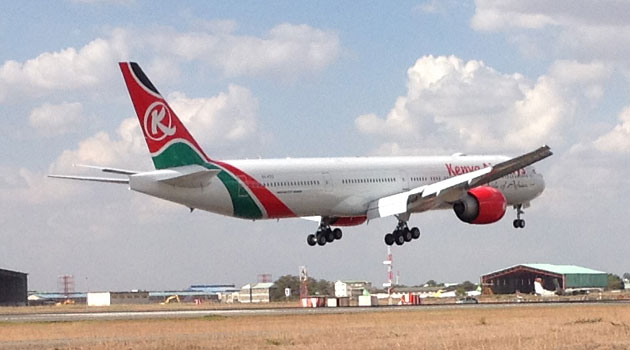
Passenger numbers in Africa, excluding Kenya, continued to grow with uplifted standing at 530,842, a 5.2 percent growth, during the quarter compared to same period the prior year/FILE
NAIROBI, Kenya, Jan 31 – Kenya Airways has continued to improve its passenger numbers despite operating a smaller fleet.
The airline has recorded a 4.8 percent growth in total passengers uplifted that stood at 1.12 million in the third quarter that ended December 31, 2016.
Passengers to Europe stood at 102,749, a growth of 2.8 percent, despite a 0.7 percent capacity decline while uplifted passenger traffic in the Middle East and Far East stood at 138,700 a 6.8 percent decline owing to a capacity reduction of 15.6 percent.
In 2016, the national carrier announced the sale of two aircrafts to a US-based carrier Omni Air International and signed a lease agreement with Turkish Airlines for one of its three Boeing 777-300 aircraft, reducing its carrying capacity.
Passenger numbers in Africa, excluding Kenya, continued to grow with uplifted standing at 530,842, a 5.2 percent growth, during the quarter compared to same period the prior year.
In Kenya, passenger uplift grew to 347,136, a 10.3 percent increase.
During the period the airline continued to invest in Africa, its mainstay. Capacity offered to Northern Africa region grew by 9.6 percent compared to prior year driven by increased frequencies to Addis Ababa and Juba.
In the East African region capacity grew by 7.1 percent driven by more operations on the Boeing 737-800, which has a higher capacity, and additional frequencies.
Capacity offered into West, South and Central African regions grew by 2.5 percent compared
to same period in the prior year with the introduction of the Nairobi-Entebbe-Bangui route, as well as the Nairobi-Doula-Bangui flight.
The airline, however, suspended Gaborone and Abuja operations in November in an effort to optimise operations in Africa during the quarter.
Additional frequencies offered by Jambojet into Ukunda, Malindi and Lamu saw capacity on the domestic front grow by 1.5 percent during this quarter compared to the same period the prior year.
The reduced capacity in the network impacted cargo.
Belly cargo available tone kilometers (ATKs) declined by 11 percent while the revenue kilometres (RTKs) reduced by 6 percent compared to prior year due to a reduction in wide body capacity in line with the fleet rationalisation.


































